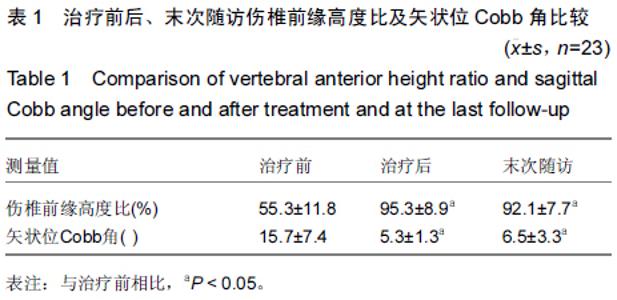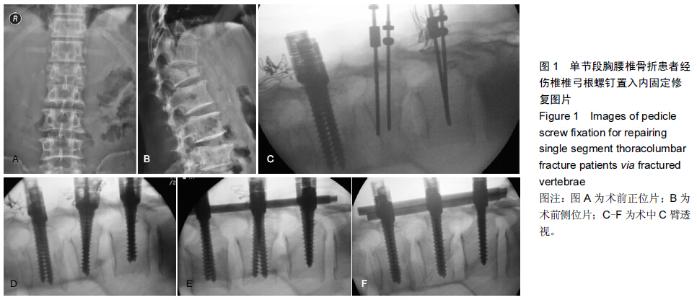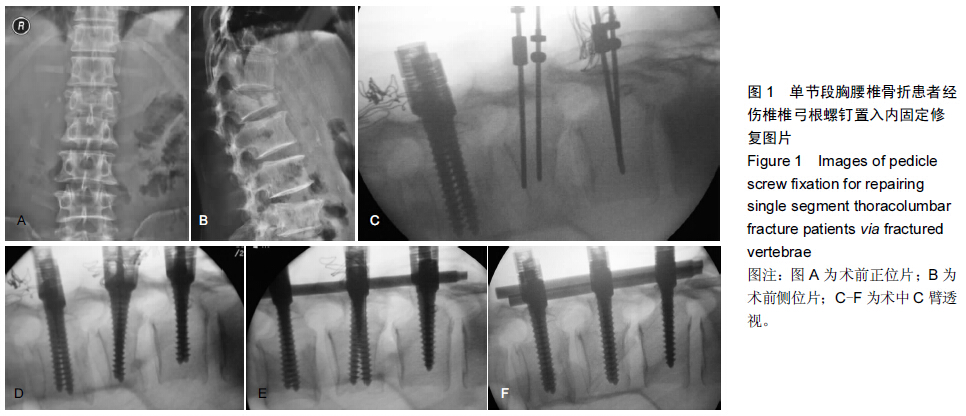[1] 胥少汀,葛宝丰,徐印坎,等.实用骨科学[M].北京:人民军医出版社, 2012:780.
[2] 杜心如,赵玲秀,石继川,等.经伤椎椎弓根螺钉复位治疗胸腰椎爆裂骨折的临床解剖学研究[J].中国临床解剖学杂志,2007,25(3): 239-242.
[3] Alanay A, Acaroglu E, Yazici M, et al.Short-segment pedicle instrumentation of thoracolumbar burst fractures: does transpedicular intracorporeal grafting prevent early failure? Spine. 2001;26(2):213-217.
[4] McLain RF,Sparling E,Benson DR.Early failure of short-segment pedicle instrumentation for thoracolumbar fractures.A preliminary report. Bone Joint Surg Am. 1993; 75(2):162-167.
[5] 李晶,吕国华,王冰,等.胸腰椎骨折脱位伤椎固定的可行性研究[J].中华骨科杂志,2005,25(5):293-295.
[6] Shen WJ,Liu TJ,Shen YS.Nonoperative treatment versus posterior fixation for thoracolumbar junction burst fractures without neurologic deficit. Spine. 2001;26(9):1038-1045.
[7] 袁强,田伟,张贵林,等.骨折椎垂直应力螺钉在胸腰椎骨折中的应用[J].中华骨科杂志,2006,26(4):217-222.
[8] Dick JC,Jones MP,Zdeblick TA,et al.A biomechanical comparison evaluating the use of intermediate screws and cross-linkage in lumbar pedicle fixation. Spinal Disord. 1994; 7(5):402-407.
[9] 范志丹,夏虹,昌耕冰,等.伤椎传统短节段椎弓根螺钉固定与附加椎弓根螺钉固定后椎体生物力学稳定性的比较[J].中国组织工程研究与临床康复,2008,12(26):5011-5014.
[10] 昌耕冰,范志丹,夏虹,等.应用伤椎置钉技术治疗胸腰椎骨折的生物力学研究与临床应用[J].中国临床解剖学杂志,2009,27(3): 347-350.
[11] 魏富鑫,刘少喻.后路短节段椎弓根钉内固定治疗胸腰椎骨折的进展[J].脊柱外科杂志,2006,4(2):112-115.
[12] 吴卫平,楼列名,史永振,等.经骨折椎椎弓根直接复位固定治疗胸腰椎爆裂性骨折[J].中华创伤骨科杂志,2006,8(9):838-842.
[13] Weinstein JN,Rydevik BL,Rauschning W.Anatomic and technical considerations of pedicle screw fixation. Clin Orthop Relat Res. 1992;(284):34-46.
[14] McCormack T,Karaikovic E,Gaines RW.The load- sharing classifi-cation of spine fractures.Spine. 1994;19:1741-1744.
[15] Parker JW,Lane JR,Karaikovic EE,et al.Successful short segment instrumentation and fusion for thoracolumbar spine fractures: a consecutive 4 1/2- year series. Spine. 2000; 25(9):1157-1170.
[16] 吕夫新,黄勇,张强,等.椎弓根钉结合伤椎固定治疗胸腰椎爆裂性骨折[J].中国骨与关节损伤杂志,2008,23(1):46-48.
[17] 曾忠友,黄伟,张建乔,等.椎弓根螺钉系统同时经伤椎置钉固定治疗胸腰椎骨折[J].中国脊柱脊髓杂志,2009,19(8):609-613.
[18] 唐刚,江建明,瞿东滨,等.后路经伤椎椎弓根螺钉固定在胸腰椎骨折治疗中的应用[J].中国骨与关节损伤杂志,2008,23(1):46-48.
[19] 王洪伟,李长青,周跃,等.伤椎置钉技术治疗胸腰椎骨折的生物力学及临床随访研究[J].中国矫形外科杂志,2011,19(16): 1356-1360.



